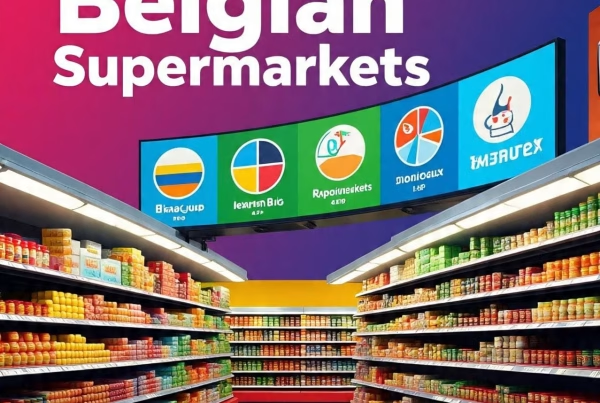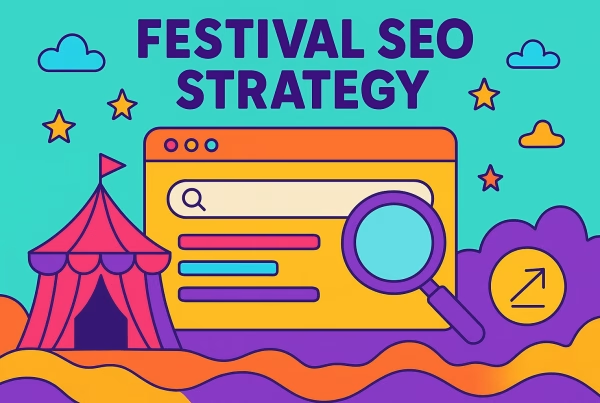Introduction
I still remember sitting across from a potential client in Antwerp last spring, watching their frustration as they described their third failed website project in two years. “We’ve spent over €30,000,” they explained, “and still don’t have a site that works properly in both Dutch and French.” Their experience isn’t unique—it’s a scenario I’ve witnessed repeatedly across Belgium where multilingual requirements and regional market differences create unique web design challenges.
Choosing the right web design agency in Belgium isn’t just about finding talented designers. It’s about identifying partners who understand our country’s distinctive business landscape, linguistic requirements, and technical necessities. The wrong choice can cost you more than money—it can set your digital presence back years while competitors surge ahead.
Belgian businesses face website challenges that companies in more linguistically homogeneous countries simply don’t encounter. Each design decision, content strategy, and technical implementation must work flawlessly across language barriers while respecting regional cultural nuances between Flanders, Wallonia, and Brussels.
“We initially hired based on portfolio aesthetics,” confessed a Brussels-based client whose first agency relationship had soured. “But we quickly learned that beautiful designs couldn’t compensate for their inability to properly implement multilingual functionality or understand Belgian consumer behaviors.”

This comprehensive guide establishes seven essential criteria for selecting a web design agency specifically calibrated for the Belgian market in 2025. Beyond surface-level considerations like portfolio and pricing, we’ll explore the critical technical capabilities, process methodologies, and partnership models that determine whether your website project will thrive or falter.

Whether you’re launching your first Belgian website or rebuilding an existing one, these selection criteria will ensure you partner with an agency equipped to navigate Belgium’s unique digital landscape.
1. The Belgian Web Design Landscape: 3 Market Realities
Before diving into specific selection criteria, it’s essential to understand the unique Belgian web design market context that shapes agency capabilities and approaches.
1.1 How 5 Industry Trends Are Reshaping Belgian Web Development
The Belgian web design industry has evolved dramatically over the past few years, influenced by several key trends:
- Multilingual-first development: Unlike markets where multilingual functionality is an afterthought, Belgian agencies have developed sophisticated approaches to building sites that perform equally well across languages from day one.
- Regional market specialization: Many Belgian agencies now focus on specific regional markets (Flanders, Wallonia, or Brussels) rather than attempting to serve the entire country, recognizing the cultural and business differences between regions.
- Framework standardization: To manage complexity, Belgian agencies have largely consolidated around a handful of proven development frameworks rather than custom-coding each project from scratch.
- Privacy-centered design: Belgium’s strict implementation of privacy regulations has pushed agencies to develop specialized expertise in compliant website architectures.
- Performance optimization focus: With Belgian internet users expecting increasingly fast experiences, agencies have shifted from design-first to performance-first development approaches.
Last year, I consulted with a company that had hired five different freelancers trying to fix their website’s performance issues. “We kept looking for a technical solution,” the marketing director explained, “when what we really needed was an agency that understood Belgian user expectations from the start.”
1.2 4 Unique Challenges of Multilingual Website Design
Multilingual website development in Belgium presents distinct challenges:
- Content expansion: Dutch and French content often differs in length by 15-30%, creating layout challenges that inexperienced designers frequently overlook.
- Regional search optimization: Effective SEO requires understanding how Belgian users search differently in Dutch versus French, including regional terminology variations.
- Consistent brand voice: Maintaining your brand voice across languages requires specialized translation expertise that many agencies claim to offer but few actually master.
- Technical infrastructure: Multilingual sites require specific technical architectures to maintain performance while supporting language switching and content management.
According to a 2024 study by the Belgian Digital Association, 62% of Belgian website projects run over budget primarily due to underestimating multilingual implementation complexity. Agencies with proven multilingual experience can help you avoid this costly mistake.
2. 7 Critical Selection Criteria for Your Web Design Partner
Now let’s examine the seven essential factors that should guide your agency selection process.
2.1 Portfolio Depth: 3 Signs of Genuine Expertise vs. Template Reliance
When evaluating agency portfolios, look beyond surface aesthetics to identify true expertise:
- Multilingual implementation examples: Request specific examples of multilingual projects and ask about the technical approach used. Genuine experts will explain their language-switching architecture and content management approach.
- Industry-specific work: Agencies with experience in your specific sector will understand your customers’ unique expectations and requirements.
- Technical complexity solutions: Look for evidence they’ve solved complex technical challenges rather than simply producing visually appealing designs.
I once interviewed an agency that showcased a beautiful portfolio but couldn’t explain how they’d implemented the language switcher on their featured projects. Later investigation revealed they were simply purchasing pre-built templates and making minor modifications—a recipe for disaster when handling Belgian multilingual requirements.
2.2 Technical Capability: 5 Development Frameworks That Matter in Belgium
The technical foundation of your website significantly impacts its performance and maintainability:
- WordPress multilingual expertise: While WordPress powers many Belgian websites, proper implementation requires specialized knowledge of WPML or Polylang plugins and custom development.
- React.js implementation: For interactive web applications, React has become the standard, but Belgian-specific considerations include localization libraries and performance optimization.
- Laravel framework mastery: This PHP framework excels for complex Belgian business applications that require robust multilingual support.
- Drupal for complex content: Particularly popular for larger Belgian organizations, Drupal provides powerful multilingual capabilities but requires specialized expertise.
- Shopify for e-commerce: Belgian e-commerce sites face unique VAT, shipping, and payment integration requirements that demand specialized Shopify customization.
When the right framework aligns with your business needs, the result is transformative. A client in the healthcare sector switched agencies to one specializing in Laravel development and saw their site performance improve by 62% while cutting maintenance costs by a third.
2.3 Multilingual Implementation: 4 Approaches That Drive Results
Not all multilingual implementations are created equal:
- Subdomain vs. subfolder strategy: The technical approach to organizing multilingual content impacts both user experience and search visibility.
- Translation workflow integration: Effective agencies establish clear processes for managing translations during both initial development and ongoing updates.
- Regional content targeting: Advanced agencies implement systems allowing different content to be shown to visitors from different Belgian regions when appropriate.
- Multilingual SEO architecture: Proper implementation of hreflang tags, structured data, and regional keyword optimization differentiates expert agencies.
“We initially saved €5,000 going with the cheaper agency,” a Belgian retail client told me recently, “but spent €15,000 fixing their flawed multilingual implementation that lost us most of our search traffic.” When it comes to multilingual websites, expertise pays for itself.
2.4 Project Management: 6 Process Indicators of Agency Excellence
The agency’s project management approach determines whether your project will be delivered on time and on budget:
- Detailed discovery process: Quality agencies begin with thorough research into your business, users, and competitors.
- Documented methodology: Ask agencies to explain their project methodology and deliverables at each stage.
- Clear communication protocols: Established channels and response-time expectations prevent frustrating delays.
- Milestone-based approvals: Structured approval processes ensure you remain in control throughout development.
- Regular progress reporting: Transparent updates prevent unpleasant surprises and scope creep.
- Dedicated project management: Having a single point of contact simplifies communication and accountability.
After watching countless projects falter due to poor project management, I’ve realized this is often where the greatest value difference between agencies lies. Technical skills matter enormously, but without strong project management, even the most talented development team will struggle to deliver results.
2.5 Post-Launch Support: 3 Service Models That Protect Your Investment
Your website needs evolve after launch, making post-launch support critical:
- Maintenance agreements: Structured support packages ensure security updates, performance monitoring, and technical issues are addressed promptly.
- Growth-focused retainers: More comprehensive arrangements include ongoing optimization, feature expansion, and marketing support.
- Training and knowledge transfer: Some agencies offer training to empower your team to handle routine updates independently.
During a recent review of a troubled client’s website, I discovered they’d been operating for eight months with critical security vulnerabilities because their agency offered no post-launch support. The resulting data breach cost them more than the entire website development.
2.6 Industry Specialization: Why 8 Sectors Demand Specialized Knowledge
Certain Belgian industries benefit significantly from sector-specific expertise:
- E-commerce: Belgian online retail faces unique payment integration, shipping, and compliance requirements.
- Healthcare: Strict Belgian privacy regulations require specialized compliance knowledge.
- Financial services: Security requirements and regulatory compliance demand specialized expertise.
- Manufacturing: B2B industrial websites have unique technical requirements and user expectations.
- Real estate: Property websites in Belgium require specialized multilingual listing management.
- Tourism: Effective tourism sites must appeal to both domestic and international visitors with distinct needs.
- Professional services: Law firms, accountants, and consultants require specifically structured content to generate qualified leads.
- Education: Academic institutions face unique content management and accessibility requirements.
My experience with a Belgian tourism client highlights this importance. Their first agency had a strong portfolio but no tourism experience. The resulting site looked impressive but failed to address key tourist behaviors like last-minute booking and mobile itinerary planning—issues a specialized agency would have identified immediately.
2.7 Budget Transparency: 4 Pricing Structures Explained
Understanding agency pricing models helps you identify the best value for your specific needs:
- Fixed project fee: Defined scope and deliverables for a set price provide budget certainty but may limit flexibility.
- Time and materials: Paying for actual hours worked offers flexibility but requires careful scope management.
- Retainer models: Monthly service agreements provide ongoing access to agency resources at predictable costs.
- Value-based pricing: Some agencies tie compensation to measurable business results, aligning their incentives with your success.
The Belgian agency market has matured significantly in recent years, with pricing becoming more transparent. According to WebDevelopment.be’s 2024 Industry Report, average website project costs range from €5,000 for basic small business sites to €50,000+ for complex e-commerce implementations. Understanding where your needs fall on this spectrum helps set realistic expectations.
3. How to Evaluate 5 Types of Belgian Design Agencies
The Belgian agency landscape includes several distinct categories, each with particular strengths and limitations.
3.1 Boutique Studios vs. Full-Service Agencies: 6 Key Differences
Understanding the differences between agency types helps match your needs to the right partner:
- Team structure: Boutique studios (2-10 people) often provide more direct access to senior talent, while larger agencies offer broader capability but potentially less personal attention.
- Specialization depth: Smaller studios frequently excel in specific niches, while full-service agencies cover more capabilities but sometimes with less depth.
- Process flexibility: Boutique studios typically adapt more easily to client preferences, while larger agencies have more established processes.
- Resource availability: Larger agencies can typically handle simultaneous projects and tight deadlines more effectively.
- Budget considerations: Boutique studios often deliver better value for smaller projects, while larger agencies may be more cost-effective for complex initiatives.
- Innovation mindset: Some boutique studios embrace cutting-edge approaches, while established agencies may favor proven methodologies.
I’ve seen successful Belgian websites built by both boutique studios and large agencies. The key isn’t agency size but rather alignment between your specific needs and their particular strengths.
3.2 3 Advantages of Brussels-Based Agencies for National Brands
National brands with broad Belgian audiences often benefit from Brussels-based agencies:
- Multilingual talent: Brussels agencies typically employ native speakers of both Dutch and French, ensuring authentic communication.
- National market insight: Daily exposure to Belgium’s diverse cultural landscape often translates to more nuanced national marketing strategies.
- International perspective: Brussels’ international character makes these agencies valuable for brands also targeting markets beyond Belgium.
During one remarkable project, a Brussels agency helped a traditionally Flemish brand successfully enter the Wallonian market by identifying subtle cultural differences in messaging that previously hindered acceptance. Their bilingual team naturally spotted nuances that would have escaped a regionally-focused agency.
3.3 4 Benefits of Regional Agencies for Local Market Penetration
Businesses targeting specific Belgian regions might benefit from regionally focused agencies:
- Deep local market knowledge: Regional agencies often have intimate understanding of local consumer behaviors and preferences.
- Local business networks: These agencies frequently have strong relationships with regional media and business communities.
- Regional dialect expertise: They understand linguistic nuances and regional terminology that can impact search visibility and user connection.
- Cultural context awareness: Regional consumer expectations vary significantly across Belgium, which these agencies instinctively understand.
A Ghent-based agency I collaborated with helped a client achieve remarkable regional market penetration by leveraging their deep understanding of East Flanders consumer behavior and regional media relationships—connections a Brussels agency might have lacked.
4. The Partnership Process: 8 Steps to Successful Collaboration
Establishing a productive agency relationship involves several critical steps.
4.1 Discovery Phase: 5 Questions That Reveal Agency Compatibility
Before committing to an agency, explore these revealing questions:
- How do you approach multilingual website development? Their answer reveals technical understanding and process maturity.
- What’s your process for understanding our business objectives? Look for evidence they prioritize business outcomes over technical solutions.
- How do you handle project changes or scope adjustments? Their answer indicates flexibility and communication approach.
- What does your maintenance process include? Post-launch support can make or break your website’s long-term success.
- Can you explain how you’ve solved a challenging client problem? Real examples reveal problem-solving capabilities and transparency.
During a recent agency selection process, one candidate stood out by asking deeply insightful questions about our target audiences rather than immediately discussing technical solutions. This customer-first approach continued throughout our successful three-year relationship.
4.2 Contract Negotiation: 7 Terms That Protect Your Business Interests
Pay special attention to these critical contract elements:
- Intellectual property rights: Ensure you own all website assets and code when the project concludes.
- Milestone-based payments: Link payments to completed deliverables rather than timeline alone.
- Acceptance criteria: Define specific standards each deliverable must meet.
- Change management process: Establish how scope changes will be evaluated and priced.
- Performance guarantees: Include specific performance metrics your site must achieve.
- Termination provisions: Clarify what happens if either party needs to end the relationship early.
- Maintenance terms: Define response times for different issue severity levels.
I’ve seen countless businesses suffer from vague contracts that left critical details unspecified. One client couldn’t launch their new product when a previous agency claimed ownership of their website codebase—a costly dispute that proper contracts would have prevented.
4.3 Communication Protocols: 4 Systems That Prevent Project Derailment
Structured communication prevents misunderstandings and delays:
- Regular status meetings: Establish fixed weekly or bi-weekly progress reviews.
- Project management platform: Use shared tools where all communications and assets are centralized.
- Escalation procedures: Define the process for addressing concerns if the standard communication channel isn’t resolving issues.
- Decision documentation: Maintain records of all key decisions to prevent misunderstandings.
The most successful agency relationships I’ve witnessed maintain meticulous communication records. During one particularly complex project, this practice saved months of work when stakeholder disagreements arose—we simply referenced the documented decisions to quickly resolve conflicts.
5. Measuring Agency Success: 6 Performance Metrics
Define success metrics before beginning work to objectively evaluate your agency’s performance.
5.1 Design Quality: 3 Objective Evaluation Methods
While design has subjective elements, these approaches provide objective quality assessment:
- User testing results: Conduct usability testing with real users from your target audience.
- Conversion rate improvements: Compare key conversion metrics before and after redesign.
- Engagement metrics: Analyze time on site, pages per session, and bounce rate changes.
Too many Belgian businesses judge website design solely on aesthetic preference. I encourage clients to test designs with actual customers—the results often challenge internal assumptions and lead to more effective websites.
5.2 Technical Performance: 5 Benchmarks That Matter to Belgian Users
Belgian users have high performance expectations:
- Page load speed: Sites should load in under 3 seconds, with critical content visible in under 1 second.
- Mobile responsiveness: Perfect functionality across all device types, particularly important as mobile traffic now exceeds 65% for many Belgian websites.
- Language switching performance: Changing languages should be instantaneous without page reloads.
- Server response time: First byte response should be under 200ms for Belgian visitors.
- Accessibility compliance: Sites should meet WCAG 2.1 AA standards at minimum.
On a recent e-commerce project, we discovered that reducing page load time from 3.2 to 1.8 seconds increased conversion rates by 23%—a improvement worth far more than the entire website investment. Technical performance directly impacts business results.
5.3 ROI Calculation: 4 Formulas That Quantify Website Value
Measuring return on investment provides objective agency evaluation:
- Conversion value: (Conversion increase × average conversion value) − website investment
- Lead generation value: (Monthly lead increase × lead value × 24 months) − website cost
- Operational efficiency: (Monthly time savings × hourly cost × 24 months) − website investment
- Customer service savings: (Support request reduction × support cost × 24 months) − website investment
I worked with a Belgian manufacturer who initially balked at their website investment until we quantified how each 1% increase in conversion rate yielded €43,000 in annual revenue. The project paid for itself in just seven months.
6. 4 Partnership Models That Maximize Long-Term Value
The most successful agency relationships extend beyond the initial project.
6.1 Retainer Relationships: 3 Structures for Ongoing Optimization
Ongoing partnerships deliver continuous improvement:
- Maintenance retainers: Basic technical support and updates to keep sites secure and functional.
- Growth retainers: Proactive improvements based on performance data and changing business needs.
- Full digital partnerships: Comprehensive digital marketing and website evolution aligned with business strategy.
After seeing countless websites stagnate after launch, I’m convinced that ongoing optimization delivers far greater value than periodic redesigns. One client’s growth retainer delivered 34% year-over-year traffic increases for three consecutive years—far outperforming their previous approach of redesigning every two years.
6.2 Growth-Based Partnerships: 5 Performance-Linked Payment Models
These innovative arrangements align agency incentives with your success:
- Conversion improvement bonuses: Agencies earn additional compensation for exceeding conversion targets.
- Traffic growth incentives: Compensation linked to organic traffic increases.
- Revenue share arrangements: Agencies receive a percentage of trackable website revenue.
- Performance milestone bonuses: Additional payments for achieving specific business metrics.
- Long-term success sharing: Reduced base rates with significant performance bonuses.
These models remain relatively rare in Belgium but are growing in popularity. One digital agency I’ve collaborated with now earns over 40% of their revenue through performance-based compensation—a structure that focuses their entire team on delivering measurable client results.
6.3 Technical Partnership Scope: 4 Service Level Agreement Essentials
Well-structured SLAs protect your business continuity:
- Response time guarantees: Define maximum response times for different issue severities.
- Uptime commitments: Establish minimum website availability requirements.
- Performance standards: Maintain specific speed and functionality metrics.
- Security monitoring: Include proactive security scanning and vulnerability management.
When a client’s website was compromised through a plugin vulnerability, their agency’s robust SLA meant the issue was detected and resolved within hours—before most visitors noticed any problem. Without such agreements, similar incidents often cause days of disruption.
7. Concluding Thoughts: Making Your Selection Decision
Selecting the right Belgian web design agency requires careful consideration of your specific business needs, target audience, and long-term digital strategy. The most successful partnerships I’ve witnessed match business requirements with agency specialization rather than simply choosing the most impressive portfolio or lowest price.
Remember that your website is often your most important marketing asset and customer touchpoint. The right agency partner doesn’t just build a website—they help build your business by creating digital experiences that convert visitors into customers while reinforcing your brand reputation.
By applying these seven essential criteria to your selection process, you’ll identify agencies capable of navigating Belgium’s unique multilingual, multicultural digital landscape while delivering measurable business results.
For businesses seeking professional guidance on website development specifically optimized for the Belgian market, our team specializes in creating high-performance, multilingual digital experiences that drive business growth.
External links:
- BeCommerce Quality Label Guidelines – Industry standards for Belgian e-commerce site development
- Web Accessibility for Belgian Government Sites – Compliance requirements that professional agencies should understand







